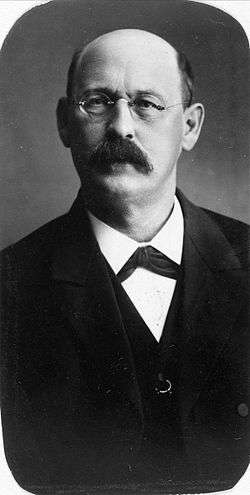Catharinus Elling
Catharinus Elling (13 September 1858 – January 1942) was a Norwegian music teacher, organist, music critic and composer. He was also a folk music collector and the author of a number of books. [1]


Biography
Elling was born in Christiania (now Oslo), Norway. He was the son of Andreas Schaft Elling (1818–1872) and Pauline Bangsboe (1826–1905). His brother was engineer Ægidius Elling (1861–1949).[3]
He studied piano and composition in Leipzig from 1877–78. In 1886 he received a scholarship and studied music at Professor Heinrich von Herzogenberg at Hochschule für Musik in Berlin from 1886–1887. From 1896–1908, he was teacher at Oslo Conservatory of Music. He was also organist at Gamlebyen Church in Kristiania from (1908–26). He was also music critic at Dagbladet (1881–82), Ny Illustreret Tidende (1884–86) and Morgenposten (1903–07). Additionally he also acted as conductor of Drammens sangforening (1897–1901).[3]
As a composer, he wrote symphonies, a violin concerto, chamber music, an opera, and more than 200 songs, most in the 1890–1905 period. His works are seldom performed now, but many musicians were influenced by him, such as Fartein Valen, who studied music under Elling.[4] [5]
Elling is principally known for his extensive work on collecting and recording Norwegian folk music. Elling was named a Government scholar in 1899. He continued a folk music collection across many rural parts of the country: Trøndelag, Gudbrandsdalen, Oppland, Telemark, Setesdal, Valdres and Sunnfjord. At the same time, folk music collector Olav Sande (1850–1927) was also named to a state stipend, and the two divided the country between them; Sande taking the music tradition from Sogn to Vest-Agder. Elling's mandate was to collect music and also work to preserve it. He published a range of music books with titles such as Norske folkemelodier for klaver, Norske folkeviser for sang og klaver and Slåtter for fiolin og klaver. Both at the time, and since, he has been criticised for wanting to rearrange folk music to fit with classical music's style.[6]
Selected compositions
- Symfoni i A-dur, 1890
- Kosakkerne, 1890–94
- D"en forlorne søn, 1895–96
- Symfoni i a-moll, 1897
- Kong Inge og Gregorius Dagsøn, 1898
- Norsk suite, 1903–04
Selected books
- Vore folkemelodier, 1909
- Norsk folkemusikk, 1922
- Sprogforholdet inden vore folkemelodier, 1930
- Nye bidrag til belysning af norsk folkemusik, 1933
- Religiøse folketoner for blandet kor, 1904–19
- Religiøse folketoner for sang og klaver, 1907–18
- Norske folkeviser for sang og klaver, 1908–25
- Norske folkemelodier for klaver, 1911
References
- Rune J. Andersen. "Catharinus Elling". Store norske leksikon. Retrieved 1 March 2018.
- Norske komponister ved Musikkfesten i Bergen, 1898, Document.dk, Retrieved 22 May 2016
- Bjørn Aksdal. "Catharinus Elling". Norsk biografisk leksikon. Retrieved 1 March 2018.
- June 14, 2017. "Heinrich von Herzogenberg (Composer)". Bach Cantatas. Retrieved 1 March 2018.
- "Catharinus Elling". lokalhistoriewiki.no. Retrieved 1 March 2018.
- June 14, 2017. "Olav Sande". lokalhistoriewiki.no. Retrieved 1 March 2018.
Other sources
- Finn Benestad, Nils Grinde, Harald Herresthal (1999) Norges musikkhistorie: romantikk og gullalder. 1870–1910. (Oslo: Aschehoug) ISBN 9788203224058